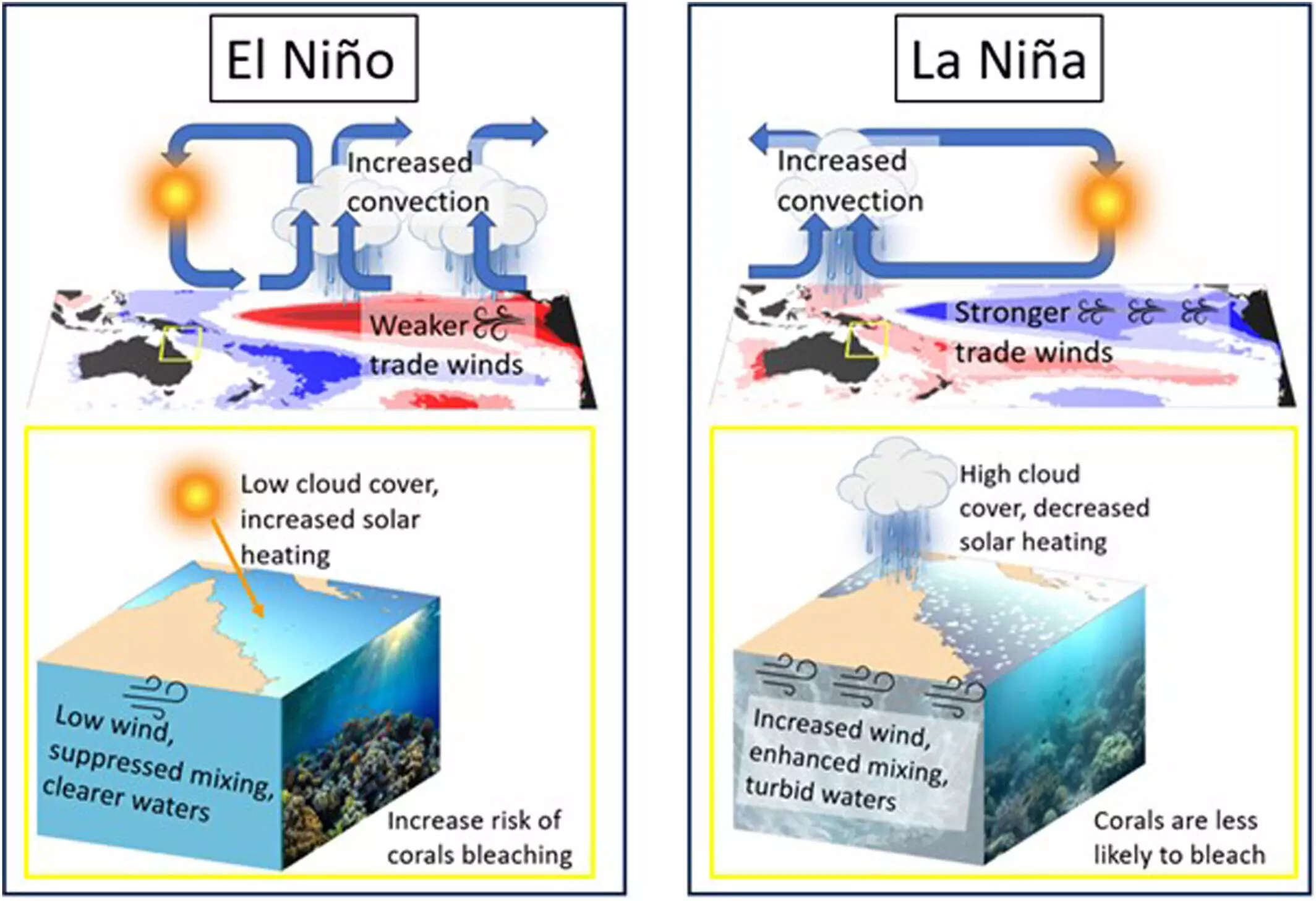A recent study has shed light on the significant impact of both the Madden-Julian Oscillation (MJO) and El Niño Southern Oscillation (ENSO) on coral bleaching events in the Great Barrier Reef (GBR). The GBR, one of the world’s largest coral ecosystems, is not only rich in biodiversity but also holds immense cultural and economic value, contributing billions to the Australian economy on an annual basis. However, the increasing ocean temperatures resulting from climate change pose a serious threat to this ecosystem.
The study, titled “Combined Role of the MJO and ENSO in Shaping Extreme Warming Patterns and Coral Bleaching Risk in the Great Barrier Reef,” reveals how climatic phenomena impact the weather conditions over the GBR, ultimately leading to the rising risk of coral bleaching. Corals in the GBR are particularly sensitive to environmental changes. While sunny and calm weather tends to elevate ocean temperatures, increasing the likelihood of coral bleaching, stormy and rainy weather can cool the waters, offering some protection to the corals.
The research highlights that ENSO, a climate pattern characterized by fluctuations in the temperature of waters in the central and eastern tropical Pacific Ocean, influences weather patterns over the GBR on a seasonal scale. On the other hand, the MJO, known for causing fluctuations in tropical weather on shorter timescales, can bring about unexpected impacts on ocean temperatures and coral health. The lead author of the study, Catherine Gregory, emphasizes how the MJO can alter the expected weather patterns associated with El Niño and La Niña periods, indicating the need to consider multiple drivers beyond ENSO.
Anticipating Coral Bleaching
Understanding how ENSO and MJO influence weather patterns is crucial for anticipating coral bleaching events in the GBR. While El Niño phases generally result in higher ocean temperatures and increased coral bleaching risk, La Niña phases tend to bring cooler conditions. However, the MJO can disrupt these patterns, leading to unexpected weather variations that impact ocean temperatures and coral health. By including both ENSO and MJO impacts in forecasting models, researchers can better predict and manage coral bleaching events in the future.
Insights and Recommendations
Gregory’s research challenges the conventional wisdom surrounding the correlation between ENSO phases and coral bleaching events in the GBR. By highlighting the significance of the MJO in influencing sub-seasonal weather variability, the study underscores the need for more comprehensive forecasting models that take into account multiple climatic drivers. As climate change continues to pose a grave threat to coral reefs worldwide, understanding the complex interactions between these drivers is essential for developing effective strategies to protect the future of the GBR and other vulnerable ecosystems.


Leave a Reply